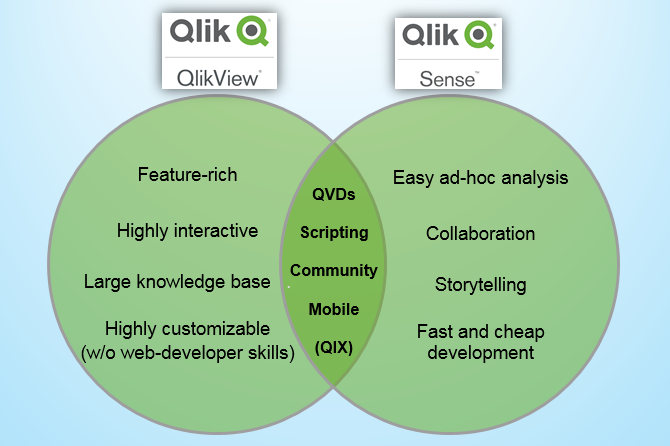Comparison between QlikView and QlikSense
Both the tools are amazing and suitable for different purposes. Though a lot of similarities exist but there are huge differences between these two. Find out the common and unique features of QlikView and QlikSense in this riveting blog!
QlikView and QlikSense- What are they?
QlikView is most flexible business intelligence platform for changing raw data into knowledge. Using QlikView simplicity, worldwide more than 24 thousand organization users to easily combine, search and visually analyze all their data for unprecedented business insight.
QlikView is a tool used by developers who put a lot of thought into the data model, the layout, the charts and the formulas and deliver the applications to end-users who consume the applications through Access Point. Here end-user has total freedom to explore data, select, drill down and navigate in the information, and can this way discover both questions and answers in the data. The end-user is however limited when it comes to creating new visualizations.
QlikSense is a self-service and discovery application designed for individuals and group collaboration. We can create quick visualization using this BI tool and also explore data extremely, share insights immediately, to expose connections in our data and see opportunities from every side.
QlikSense is a tool for situations where you don’t need much technical knowledge as prerequisite. Rather the user have the freedom to create a layout of his own and in it, new visualizations; charts that the developer couldn’t imagine that the user wants to see. You want Self-service data discovery, which means a much more active, modern, engaged user. In addition, QlikSense is much easier to use when you have a touch screen, and is adaptive to different screen sizes and form factors. In a nut cell, QlikSense is a much more better and modern tool.
Common features of QlikView and QlikSense:
- Both support rapid BI visualization and sharing, mobile discovery and exploration, governed data discovery and structured IT managed dashboards
- Similar analysis algorithm
- Both provide interactive BI visualizations
- Mobile Applications
- Both Support QVD source

Generic comparison of QlikView vs. Qlik Sense:
QlikView |
Qlik Sense |
|
|
|
|
|
|
|
|
|
|
|
|
|
|
|
|
|
|
|
|
|
|
|
|
|
|
Please feel free to comment by suggesting further differences. And finally let’s be friends…